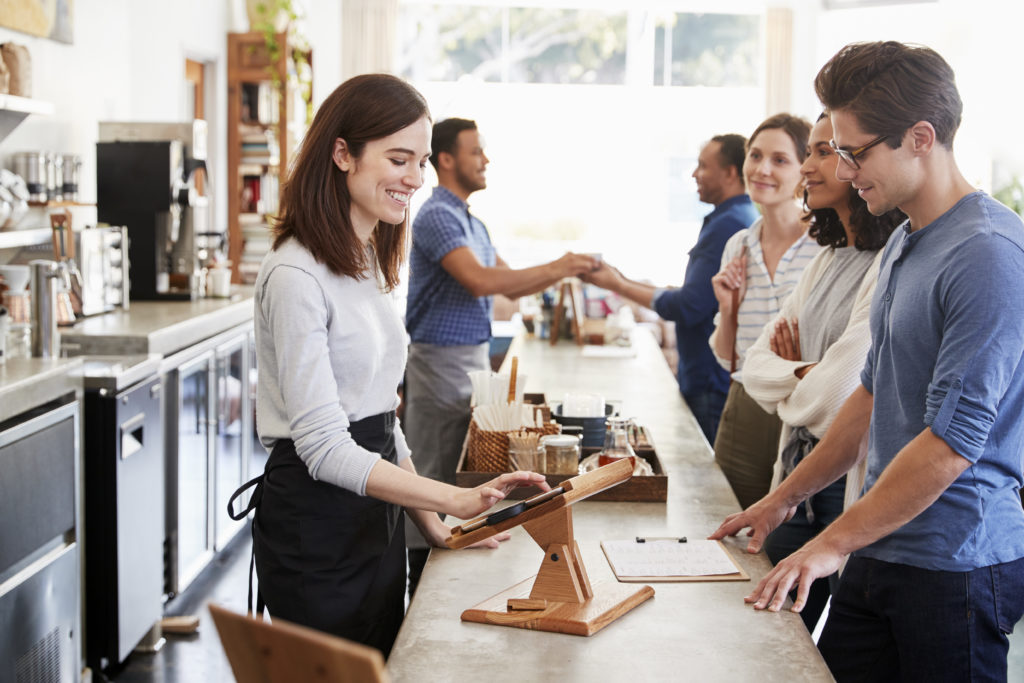The Future of Customer Loyalty Programs: What Retailers, Food Businesses, and Beauty Brands Need to Know

Customers queuing to order and pay at a coffee shop counter
Customer loyalty programs have been around for decades, but they have evolved significantly over the years. In the past, these programs were simple punch cards or point systems that rewarded customers for making repeat purchases. However, with the rise of technology and the changing needs of consumers, loyalty programs have become more sophisticated and personalised.
In this blog post, we will explore the future of customer loyalty programs and what retailers, food businesses, and beauty brands need to know to stay ahead of the game.
Personalisation is Key
One of the biggest trends in loyalty programs is personalisation. Consumers today expect a personalised experience, and loyalty programs are no exception. Retailers, food businesses, and beauty brands need to gather data on their customers and use it to tailor rewards and promotions to their individual needs and preferences.
For example, a beauty brand could offer a personalised skincare regimen based on a customer’s skin type and concerns. Similarly, a food business could offer personalised meal recommendations based on a customer’s dietary preferences.
Mobile Integration
Another trend in loyalty programs is mobile integration. With the increasing use of smartphones, loyalty programs need to be accessible via mobile devices. This means that retailers, food businesses, and beauty brands need to develop mobile apps or integrate their loyalty programs with existing apps. This allows customers to easily track their rewards and redeem them on the go.
It also allows businesses to send personalised promotions and notifications directly to customers’ phones.
Gamification
Gamification is another trend in loyalty programs. This involves adding game-like elements to a customer loyalty program to make them more engaging and fun for customers. For example, a retailer could offer a virtual scratch card game where customers can win discounts or prizes.
A food business could offer a loyalty program that rewards customers for trying new menu items or completing challenges. Gamification can help to increase customer engagement and loyalty by making the program more interactive.
Sustainability
Sustainability is becoming increasingly important to consumers, and this is reflected in loyalty programs. Retailers, food businesses, and beauty brands are incorporating sustainability into their loyalty programs by offering rewards for eco-friendly behaviour.
For example, a retailer could offer a discount for customers who bring their own reusable bags or containers. A food business could offer a discount for customers who bring their own reusable cups or cutlery. This not only promotes sustainability but also helps to build customer loyalty among environmentally conscious consumers.
Data Privacy and Security
As loyalty programs become more sophisticated and personalised, the collection and use of customer data becomes more important. However, with the increasing concern over data privacy and security, retailers, food businesses, and beauty brands need to ensure that their loyalty programs are transparent and secure.
This means being clear about what data is collected and how it is used, as well as implementing strong security measures to protect customer data. By doing so, businesses can build trust with their customers and ensure that their loyalty programs are used for the benefit of both the customer and the business.
Partnership and Collaboration
Finally, partnership and collaboration are becoming more important in loyalty programs. Retailers, food businesses, and beauty brands are partnering with other companies to offer joint loyalty programs.
For example, a retailer could partner with a food business to offer a joint customer loyalty program where customers can earn rewards for shopping and dining. Similarly, a beauty brand could partner with a wellness brand to offer a joint loyalty program that rewards customers for purchasing both beauty and wellness products.
These partnerships not only offer customers more opportunities to earn rewards but also help to expand the reach of the loyalty program.
Conclusion
In conclusion, the future of customer loyalty programs is all about personalisation, mobile integration, gamification, sustainability, and partnership. Retailers, food businesses, and beauty brands need to stay ahead of the game by incorporating these trends into their loyalty programs. By doing so, they can build stronger relationships with their customers and increase customer loyalty in an increasingly competitive market.




